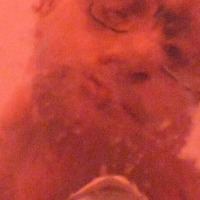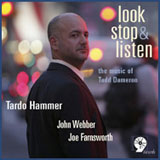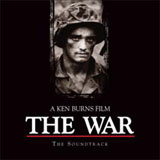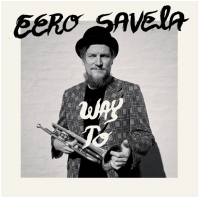Home » Jazz Articles » Live From New York » David Murray, Nicholas Payton, John Scofield, Mike Stern...
David Murray, Nicholas Payton, John Scofield, Mike Stern, John Abercrombie and Matthew Shipp
The New York jazz clubbing scene remained as vital as ever during the months of October and November. Usually, sets begin at their appointed time, as each venue adheres to a crammed nightly program, but for the final set on the final night of David Murray's Black Saint Band run at Iridium, the saxophonist leader strayed off, doubtless due to the delivery of an extended-blowing first set. Murray might be hard to get hold of, but once ensconced onstage, there's no stopping his energized flow of solos. It's almost as though he deliberately uses bandmates as conventional jazz foils. They provide a steady base from which he's free to roam in all directions, but usually upwards. Murray's soloing is as liberated as in his freer 1970s days but employing a tighter framework. His trademark highly-controlled cries and squeals are in place, and these lengthy explorations grip the listener throughout. Pianist Lafayette Gilchrist is fast building up a strong reputation of his own, with expressive outpourings almost as copious as Murray's.
Nicholas Payton, Steve Turre, and Pat Martino at Dizzy's Club
On the other hand, trumpeter Nicholas Payton is opting for an easier life, blending in to a fairly smooth mainline jazz quintet line-up, playing comfortably with snatches of New Orleans and Cuban tradition. Near the start of his run at Dizzy's Club, Payton reeled off a sequence of pristine solos, and regaled the crowd with a few vocal numbers, his voice certainly not spectacular, but still warm with feeling. Staying in the same club, a week later, trombonist Steve Turre also appeared to be putting aside his old adventurous character, delivering a very smooth set, albeit of mostly original material. Again, there's nothing amiss with the soloing, particularly with the magnetic sideman presence of vibraphonist Stefon Harris, but a genuine spark only really ignited towards the conclusion, as Turre brought out more than his usual array of tuned conch shells, switching back to 'bone for a climax that arrived slightly too late. The week after that, also at Dizzy's, guitarist Pat Martino sat in front of the Eric Alexander Quartet, not quite seeming like an outsider, but when his solos squeezed out, sounding like he was operating in his own universe, with a dense, scintillating tone that made his contributions lift above the band's keen backing.
John Scofield at The Blue Note
Meanwhile, another guitarist, John Scofield, brought his trio to The Blue Note, augmented by The ScoHorns. This is a combination which takes several recent concerns and co-opts them into a sympathetic one-ness. The jam band grooving that has so dominated Scofield's albums during the last decade is still allowed to pulse at the core, but the presence of the horn threesome adds a studied coloration, and the leader's own playing is becoming curiously influenced by the latterday stylings of Bill Frisell, with an increasing input of both country twang and a dangerously veering rock potency. In fact, Frisell guests on the current This Meets That album, so maybe Scofield is toying with those very parts. It's as though Sco is making an ultimate synthesis of all the genres that have influenced him over the last three decades.
Mike Stern at the Iridium
Sounding quite different, but roughly from the same school, Mike Stern was playing with his quartet, a month later, at Iridium. Here's another guitarist who seems in the grip of happiness, openly enjoying his all- star line up of Bob Franceschini (tenor saxophone), Richard Bona (bass) and Terri Lyne Carrington (drums). Stern gives his all, as do his cohorts, with Carrington in particular rattling off some astoundingly fast stutters, and Bona performing some imaginative vocal layering tricks, his voice the pure embodiment of sweet Cameroonian melody. Amidst all this, Stern was almost the least forceful player, too awed by the contributions of his colleagues.
John Abercrombie at the Jazz Standard
The next night, John Abercrombie led his Organ Trio at Jazz Standard, with two sets differing dramatically. The first was dominated by original material, the second turning into a feast of standards, with Hammond man Gary Versace repeatedly pushing the music into a more adventurous zone. Abercrombie and drummer Adam Nussbaum are a comfortable team, so it was refreshing to see them challenged by Versace's slightly unsettling approach, as he investigated the high needling and low rumbling extremes of the keys and pedals.
Matthew Shipp at Columbia University
Pianist Matthew Shipp's appearances are relatively rare. His Nu-Bop Quartet is inappropriately named, as its main language is that of golden-era free jazz, trimmed by electronic elements introduced by drummer Guillermo E. Brown. The formal atmosphere of Columbia University's Miller Theatre was something that took an intermission to overcome. The band's second set appeared much more relaxed and confident. Brown employed laptop and sample-pad assistance to perform a percussion solo that reared up separately from the music's main mass, whilst Daniel Carter moved with equal articulacy from trumpet to clarinet to flute, then saxophones, shading around the densely rippling structures created by Shipp. Bassman William Parker stood, unruffled, in the center of this maelstrom.
Rashied Ali at the Jazz Standard
Later that same evening, drummer Rashied Ali gave a storming set at Jazz Standard, leading a quintet that's devoted to original composition. "Judgement Day" provided the night's absolute peak, written by tenor man Lawrence Clark, and streaked with an oddly Scottish Highland lilt. This epic piece provided a chance for its composer, along with altoist Lakecia Benjamin to stream out solos that ascended to the very heavens, full of boundless invention and intense stamina. The bandleader himself borders on the modest, choosing not to display the extended abstraction of his time with John Coltrane. This quintet is more of a hard bop outfit, but strengthened by innovative tunes and a delivery that imbues the music with a continuous vibrancy.
Sam Rivers at the Marian Anderson Theatre
Even though it was announced very late, the Sam Rivers gig at the Marian Anderson Theatre in Harlem managed to draw a good crowd. The evening opened with an onstage interview, conducted by Professor Brent Hayes Edwards, whose seriousness was carefully dismantled by the wisecracking Rivers. This wry tone continued into the veteran saxophonist's first set, ostensibly a trio improvisation, but with this format derailed by the leader's spontaneous (and mischievous) urge to formulate unlikely permutations from within his Rivbea Orchestra. At this point, a set of severe technical problems were becoming apparent. In fact, the evening's seemingly inept sound engineers were hopelessly battling with a lead microphone that was repeatedly cutting out, at crucial soloing or speaking moments. This was extremely distracting throughout the first set. Also, this theater is a lofty space, so the music didn't require thick ladlings of artificial reverb, to the point of ridiculously swamping the music. The sound of the Rivbea Orchestra is rich and multi-layered, so an overabundance of reverberation just made the sound muddy and crowded. That said, the force of the big band performance easily surmounted these problems, with its complicated avant funk patterns setting off a sequence of incendiary solos, some of which were simply dazzling in their dexterous speed and energy.
Sheila Jordan and Roswell Rudd at the Iridium
Sharing the Most Mischievous Performer award with Rivers is singer Sheila Jordan, celebrating her birthday with trombonist Roswell Rudd (79 and 72 respectively). Both of them behave like teenagers, really, but not the sulky sort. The impish sort, instead. This is very refreshing, turning the second of their two nights at Iridium into a lively and extended party, full of vocal deconstructions of standard material, and trombone irreverence on the part of Rudd, who manages to invest New Orleans carnality with a free jazz engorgement. They were casual and profound, jokey and emotional, tight and succinct, all at the same time.
Maria Schneider Orchestra at the Jazz Standard
Still not without humor, but cloaked in a mysterious tastefulness, the Maria Schneider Orchestra packed out the Jazz Standard club, highlighting material from the recent Sky Blue album, but also delving back into older works. Her lush tonal blankets are directly descended from the music of Gil Evans, who was Schneider's composing and arranging mentor. Schneider has to be caught in the flesh to fully appreciate the communicativeness of both her conducting manner, and her close relationship with her players. Her sensitive hand gestures produce instantaneous results from the players, as each pristine layer brushes up against the next. She also has the courage to pace a set from slow to slow to slower, but eventually attaining a crescendo via a subtle upward gradient.
All-Star Holiday Sounds at Dizzy's Club and The Blue Note
The Thanksgiving holiday brought hearty fun, in the shape of reedsman Ken Peplowski and guitarist Bucky Pizzarelli at Dizzy's Club, and said trumpeter's Alumni All-Stars down at The Blue Note. Both sets of sets were cheerfully entertaining, with Ken and Bucky breezing through the Cole Porter songbook (Richard Rodgers and Irving Berlin on other nights), charming the turkey-stuffed bellies of a more sociable Thanksgiving crowd. Clark Terry had ducked out of the Dizzy Gillespie role at The Blue Note, but his understudy, Greg Gisbert, was well-prepared to negotiate the highest of trumpet runs, with great efficacy. Reedsman James Moody provided the humor, whilst trombonist Slide Hampton kept everyone in check, tackling a Dizzy repertoire that spanned his entire career, early to late periods.
The Blue Note also operates a couple of extra-marital affairs: its late night groove series and its Sunday brunch sets. The great Melvin Sparks led a raunchy trio with the classic Hammond organ and drums set-up, spinning out a series of highly involved guitar solos, deep into the night. Then, for a more relaxed afternoon session, Junior Mance definitely arrives from the bluesier end of the jazz piano tradition, delivering a set of easy-going rollers, fluent and cheery, making the odd pause for sombre reflection, before bouncing off into the next set of changes.
Tags
PREVIOUS / NEXT
Support All About Jazz
 All About Jazz has been a pillar of jazz since 1995, championing it as an art form and, more importantly, supporting the musicians who make it. Our enduring commitment has made "AAJ" one of the most culturally important websites of its kind, read by hundreds of thousands of fans, musicians and industry figures every month.
All About Jazz has been a pillar of jazz since 1995, championing it as an art form and, more importantly, supporting the musicians who make it. Our enduring commitment has made "AAJ" one of the most culturally important websites of its kind, read by hundreds of thousands of fans, musicians and industry figures every month.


























